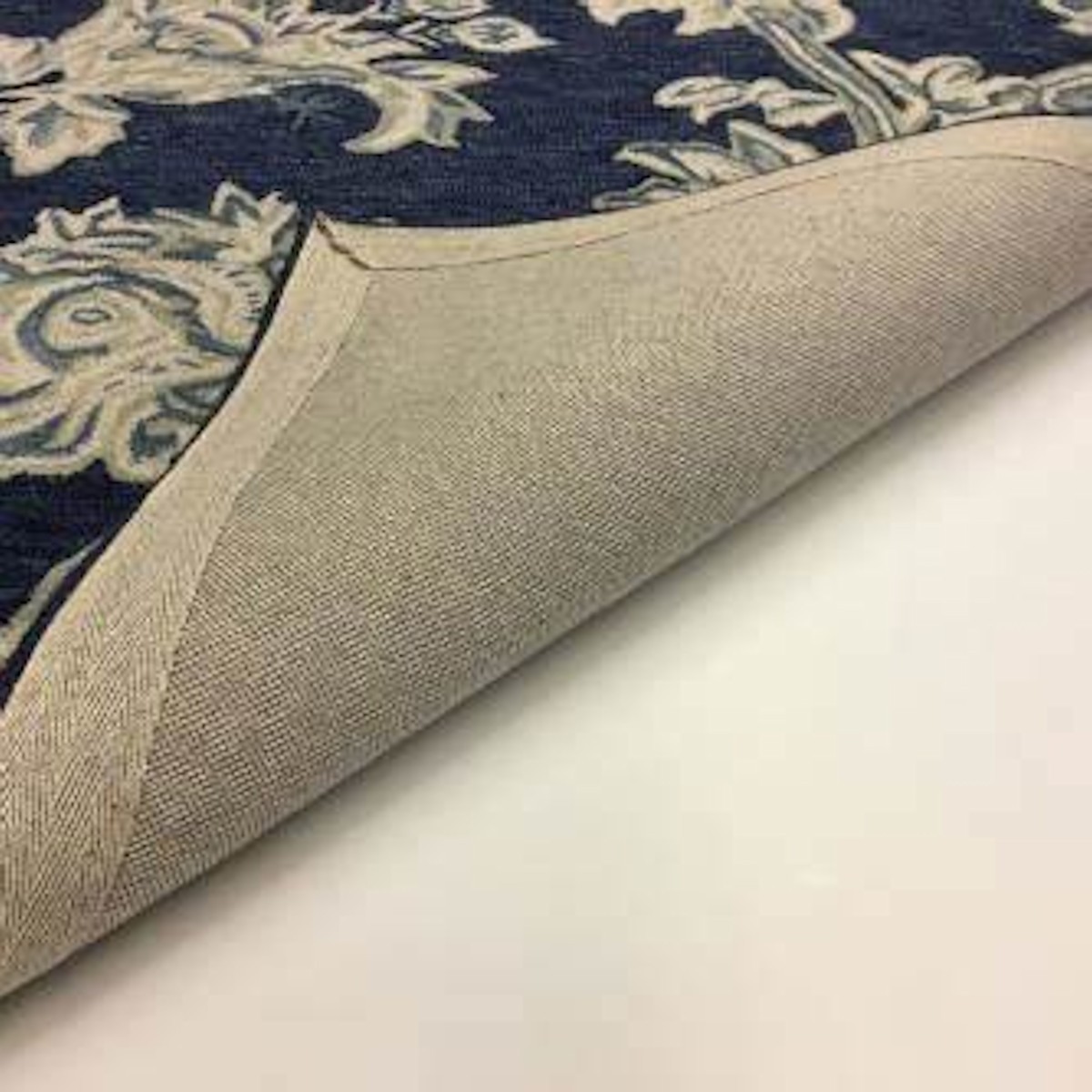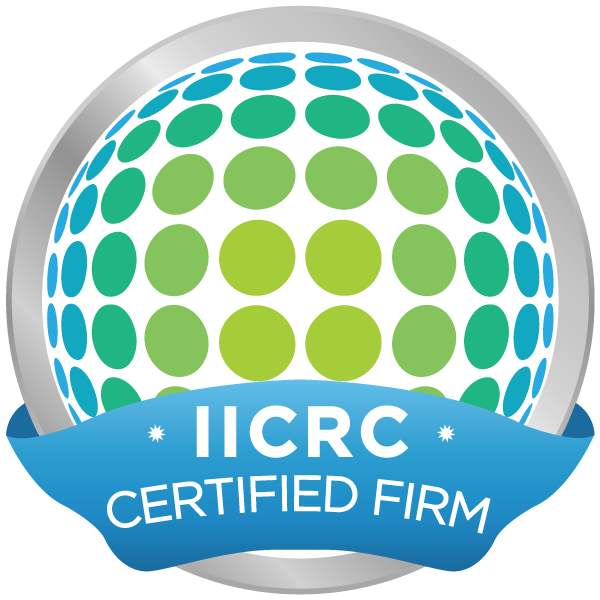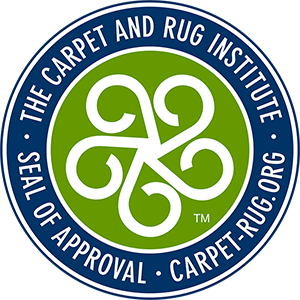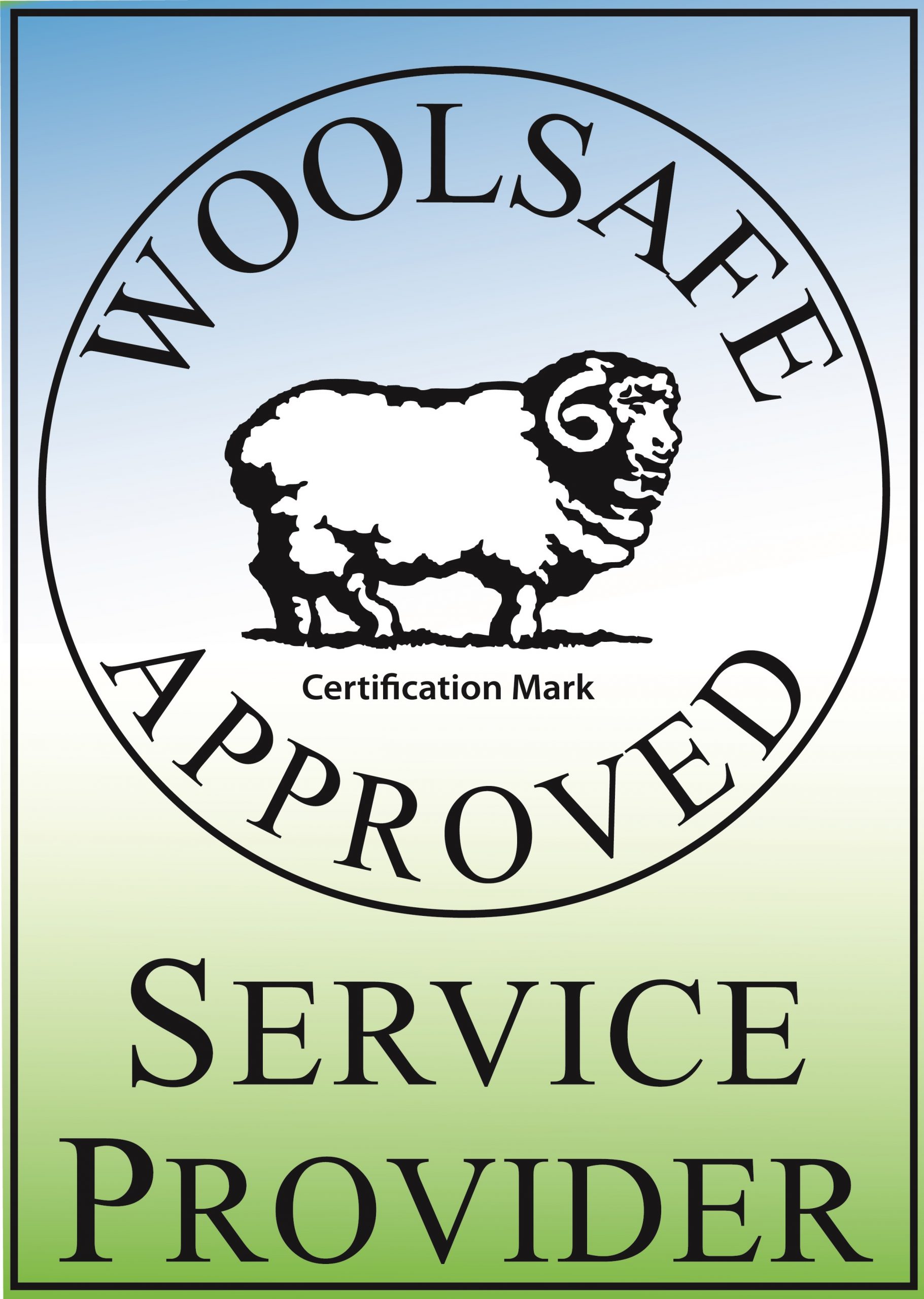
Why Do Some Oriental Area Rugs Stink?
Oriental Rug Salon explains what a “tufted” area rug is, and if it stinks, why it stinks.
If you look at the back of an area rug and you cannot see the pattern that appears on the front, chances are you have a “tufted rug.” Unlike hand-knotted area rugs where you can see the same design on the back as the front, tufted rugs have a cloth backing on the backside, and there is an excellent reason for this. To view our video on tufted rugs, click here.
A machine can make tufted rugs in a factory or a person using a handheld tufting gun. When a tufted rug is made, the face yarns (yarns appearing on the front of the rug) are poked through a backing material. To hold the yarns in place, a layer of latex is spread across the back of the rug. This latex glue will hold the material used in the construction of the area rug while strengthening and stiffening the rug’s construction to hold it all together. Finally, a secondary backing cloth is added to protect the primary backing and for cosmetic reasons.
Machine tufted rugs are primarily made in the United States and are often referred to as broadloom and can be sold as wall-to-wall carpets or as area rugs.
Hand-tufted rugs are made primarily in Asia, usually in India or China. They are sold as area rugs in a full variety of sizes and are sold by various vendors, from specialty rug shops to home furnishing stores and websites. The primary benefits of this tufted rug construction are that the rugs are relatively inexpensive compared to traditional hand-knotted and hand-woven rugs. They are faster to make, so they are more responsive to fashion trends. However, this type of construction has disadvantages as well.
From the moment the latex is applied to the rug, it begins to break down. Over time the secondary backing loses its “grip” or adhesion to the latex, and bubbles and ripples can start to show on the rug. If low-quality latex was used, this could happen shortly after the rug was purchased. As latex ages, it turns to a fine sand-like powder left on the floor underneath and near these rugs. Consumers often think sand is coming out of their rug, but it’s the latex breaking down. Odor can also be an issue with these rugs. Latex can give off a noxious odor that can vary from barely noticeable to oppressive depending on the quality of the adhesive. Rugs give off this odor before they are purchased, but often they are more prominent in the smaller spaces of a home than in a large showroom.
It should also be noted that once you start to see this “fine sand,” it will seldom go away, regardless of how many washings your rug receives. The only way to solve this issue is to have a skilled rug repair facility remove the cloth backing and defective adhesive and reapply.
Humid environments and warm rooms with sun exposure can also make the latex odor more noticeable.
Additionally, in hand-tufted rugs, the pattern is often stenciled onto the primary backing in a color unrelated to the rug’s colors. This stenciling can wick to the rug’s surface, marring its appearance. These issues make cleaning these rugs, especially hand-tufted rugs, challenging. Some of these issues can be corrected. If the latex has failed, it may be possible to remove the secondary lining and rebuild the layer of latex, and if the stenciling wicks to the surface, it can sometimes be removed with color strippers. However, some issues cannot be corrected.
The smell of latex in the backing will not dissipate with cleaning and may worsen over time. It is essential to understand that these conditions are inherent in rugs of this construction, and while we can use industry best practices in cleaning these rugs, we often cannot avoid or undo these issues.
A conversation together about what can and cannot be done for your rug is the best way to ensure you are satisfied with the cleaning results. Call Oriental Rug Salon today for a free consultation.
Oriental Rug Salon is SW Florida’s leading Oriental, Persian, Turkish, wool, and silk area rug cleaning, repair, and appraisal company serving clients nationwide. We are internationally certified as a WoolSafe Approved Service Provider and Certified by the Carpet & Rug Institute (CRI).
Hopefully, this blog post helps explain what a “tufted” area rug is and if Oriental Rug Salon can ever be of service or if you have any questions about your rug, please call us any time.
For more information about Oriental Rug Salon, please visit us online at www.OrientalRugSalon.com or “call us on the carpet” any time at 239-424-8171. We offer FREE pick up and delivery for most area rugs throughout Lee, Charlotte, and Collier County, Florida and accept area rugs from around the country for cleaning, repair, and secure storage.



